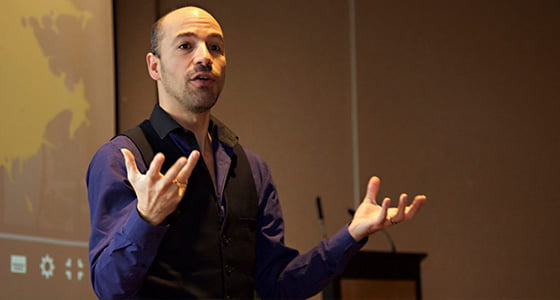I came to programming after 25 years in the field of social action, starting in Beeston, Nottingham, when I was 15 years old, newly arrived from Mexico. I went to my local volunteer bureau and asked how I could be of service. They put me in touch with a lovely elderly lady whom I visited every week to offer company and mobility. From that early start I continued to search for opportunities to make a difference: volunteering, training, working, researching and travelling across Britain and around the world, seeking to understand how to best address the world’s many challenges.
This search for understanding and solutions has brought me face to face with many of the world’s biggest problems, from homelessness to war, from religious conflict to racism, from raw inequality to extraordinary indifference. But it has also demonstrated how the balance of humanity lies, by far and away, clearly on the side of human decency, with most of us on average being mostly good (or at least mostly not bad) to most people, most of the time. And yes, I have met the darker sides of our nature, from unrepentant murderers, to more pedestrian but perhaps more costly everyday selfishness and indifference by multitudes.
Yet I have met, everywhere, over and over, extraordinary human beings – from obvious icons like Mandela or the Dalai Lama, to hundreds, thousands of people whose lives are kind, selfless and abundant, and add each day to the sum of life, to their families, friendships and communities.
I have also learned that there is always hope; that change remains a possibility. I learned it among former child soldiers in Sierra Leone, who after a life of killing and violent mutilation, were in the process of becoming positive agents of change, their life of service unable to erase their past brutality, but that brutality unable to define their future. If they could change, we all can.
I learned the same message in a very different way when working toward suicide prevention, using theatre to increase resilience. To find, again and again, that when we meet the limits of our hope, when there is no way out, time alone will, inevitably, bring change. And with change, possibility. To see hope grow again, from ashes. To see happiness in lives that had given up. To see time heal wounds, enough at least to allow joy to break through (sometimes even as the pain endured). In all these things, I found that hope awaits, no matter what, no matter when.
And after all these years, I came to one conclusion. That across the hundreds of projects and initiatives I have been part of or observed, the magic came from one essential force: our ability to make meaningful bonds with one another in service to humanity, whether ‘humanity’ means our family, our neighbourhood, our country or the world.
Which brings me to technology.
It seems to me that in general terms, technology has dramatically increased the scale of our connectedness to one another, but it has not proportionally increased our desire or willingness to be of service to each other. And, in general terms, the agencies and individuals that bring people together in actions aimed at improving the world tend to do so at a relatively local scale.
There are exceptions. Avaaz.com is an example of a platform that has brought millions together in concerted action through technology, with genuine impact both on the ground and in national and global policy. The Red Cross is an example of a movement bringing together 17 million volunteers, mostly without technology.
But on the whole, it seems to me, the world of technology holds the potential for scale, while the world of social action holds the potential for motivation. If you can connect the insights accumulated in the sphere of social action about the art of coming together to make a lasting, ethical and empowering difference, with the insights in the sphere of technology about the art of coming together at scale, then our potential to collectively understand and address the challenges of our communities, societies and the planet as a whole, will be dramatically increased.
This is why I joined Mayden Academy. I have learned a good deal from the insights of the world of social action. It is time to learn from the insights of technology; at Mayden, I fully feel I am – and I feel confident that at the end of this course I will know enough to make a start on this new stage. Not least by working with companies who share with me the goal of harnessing technology to make the world a better place.


